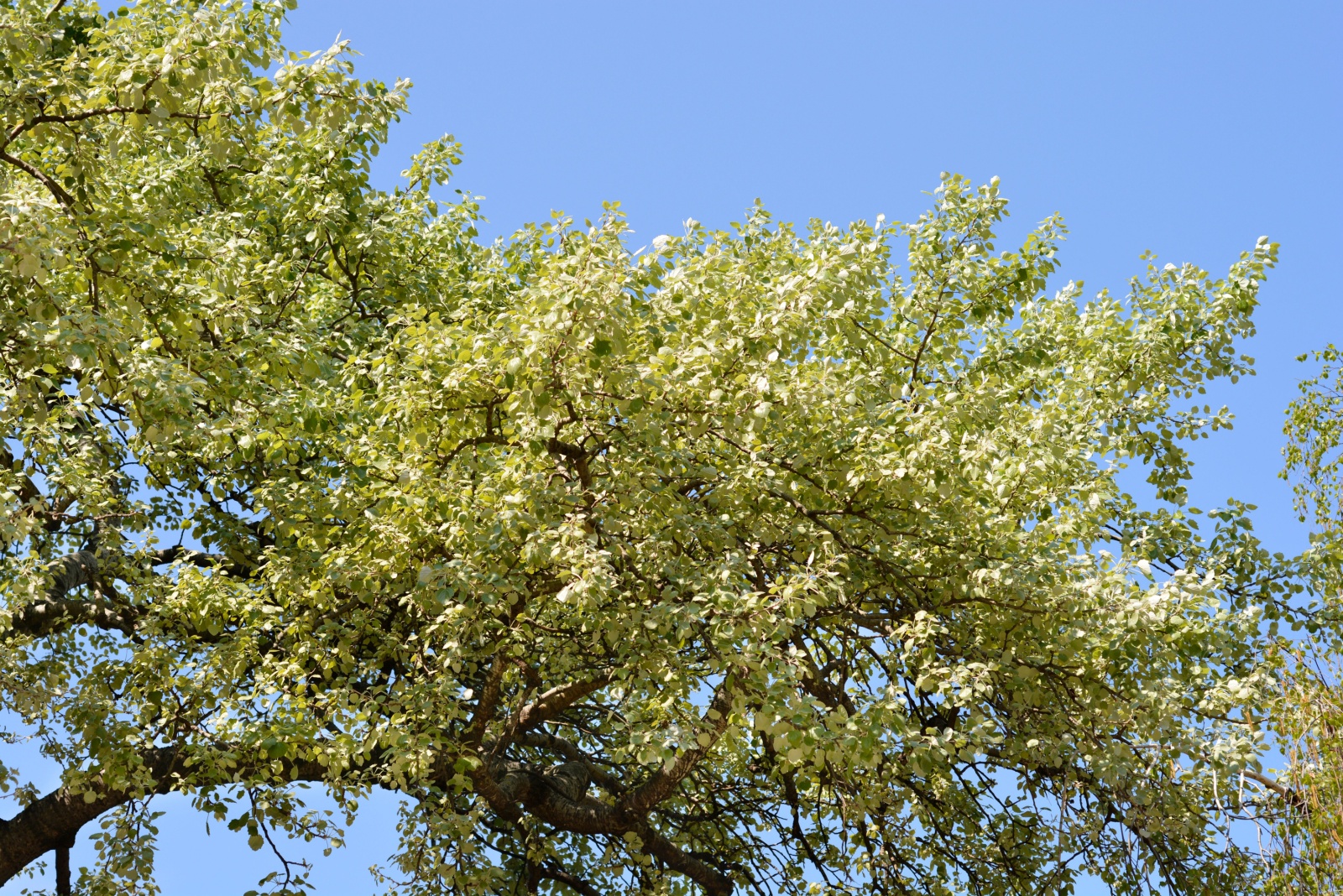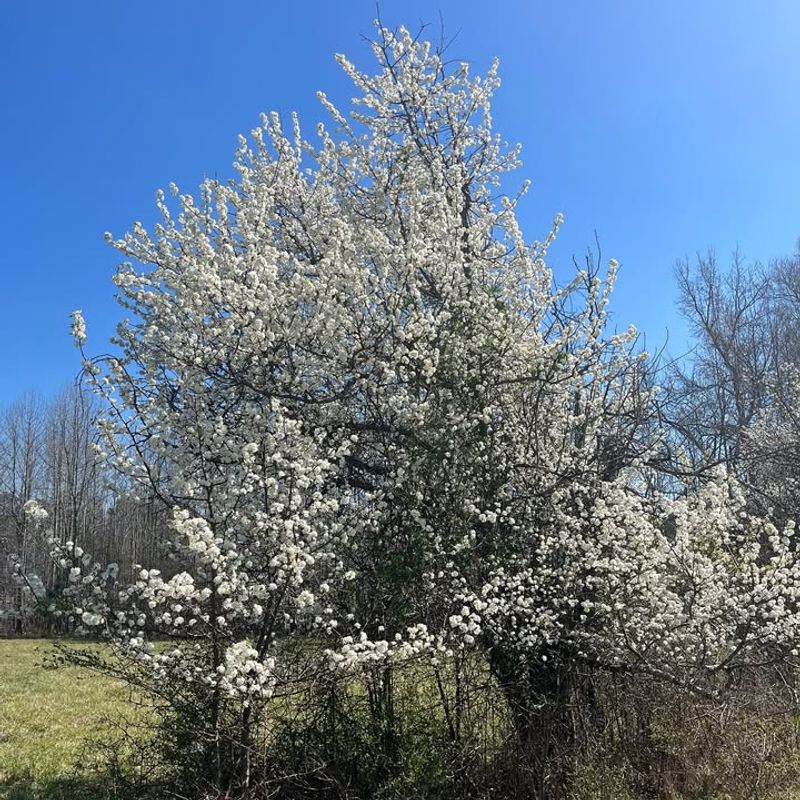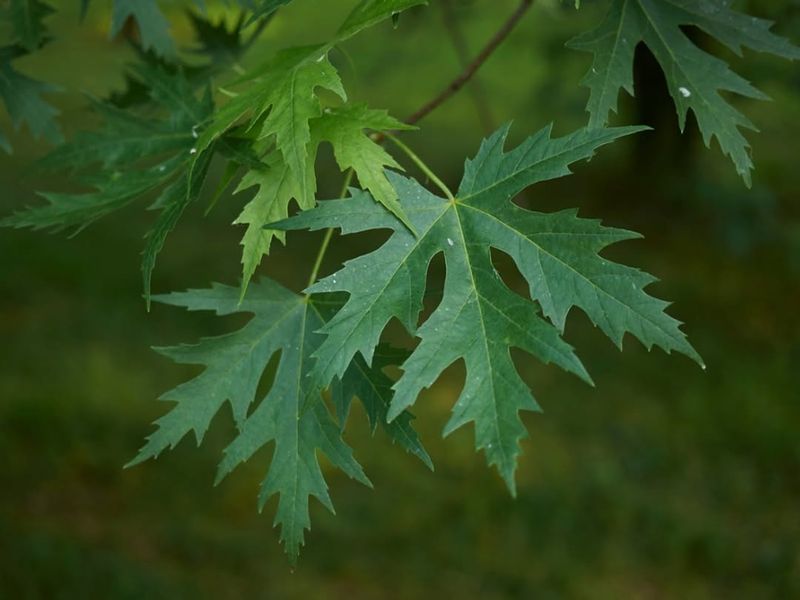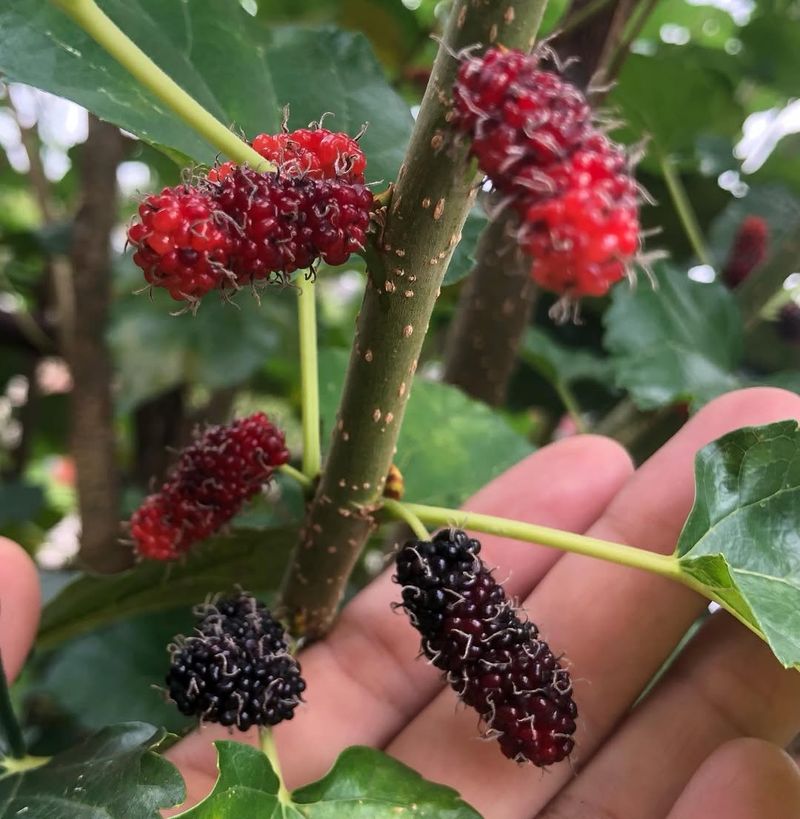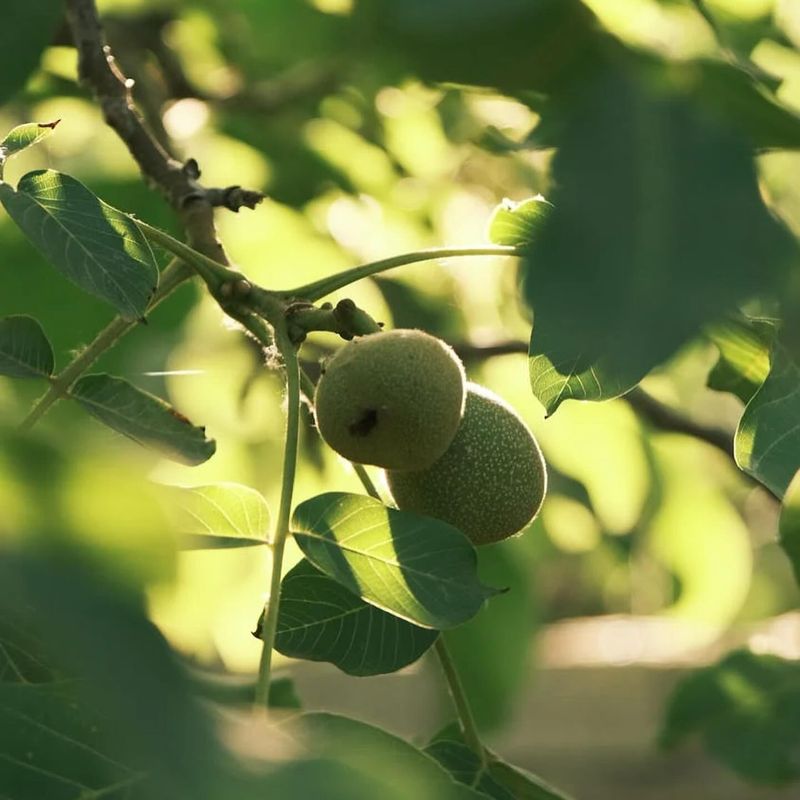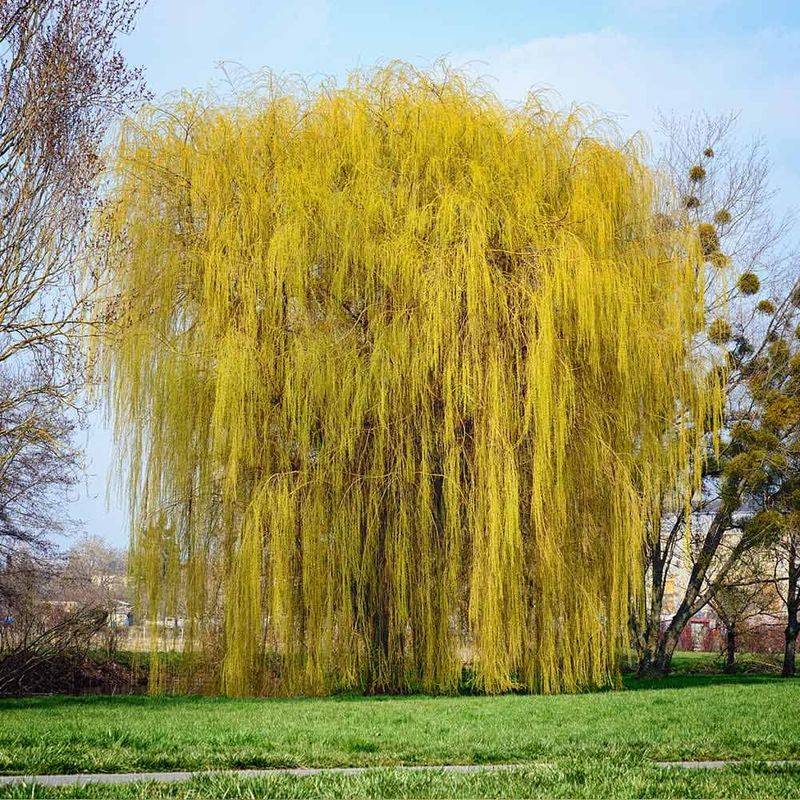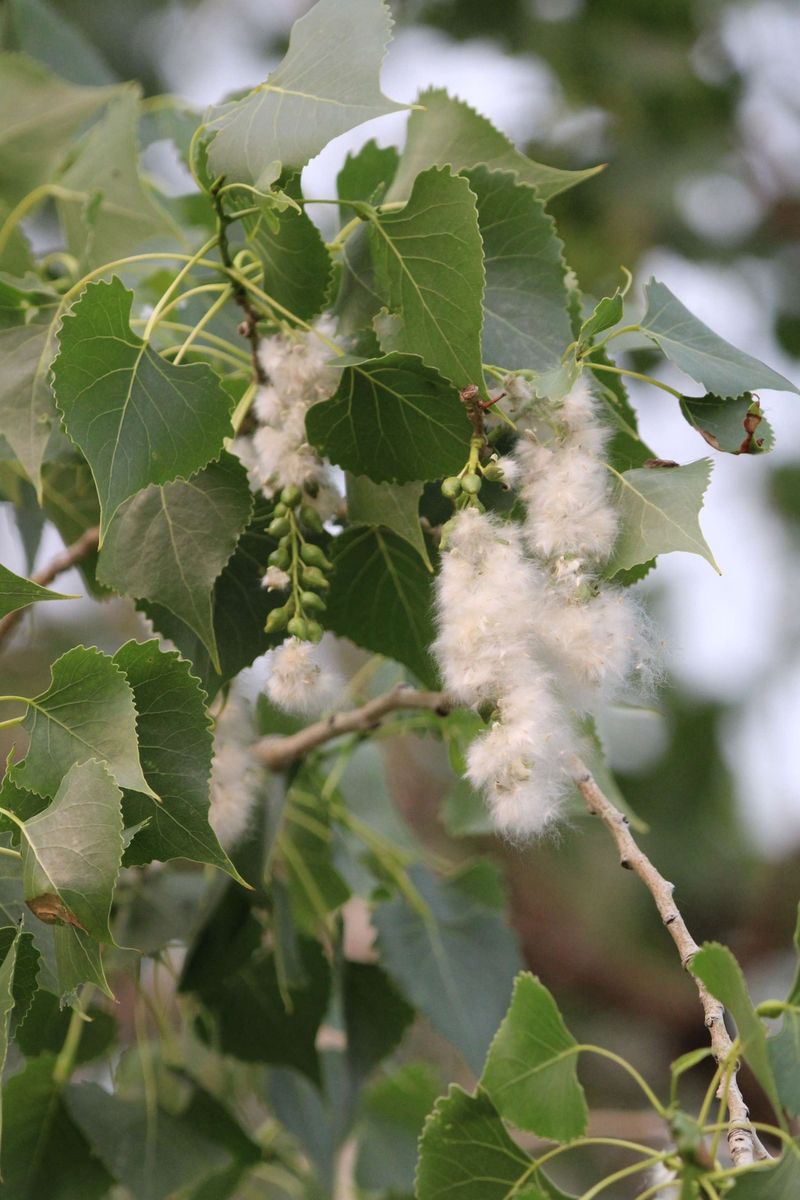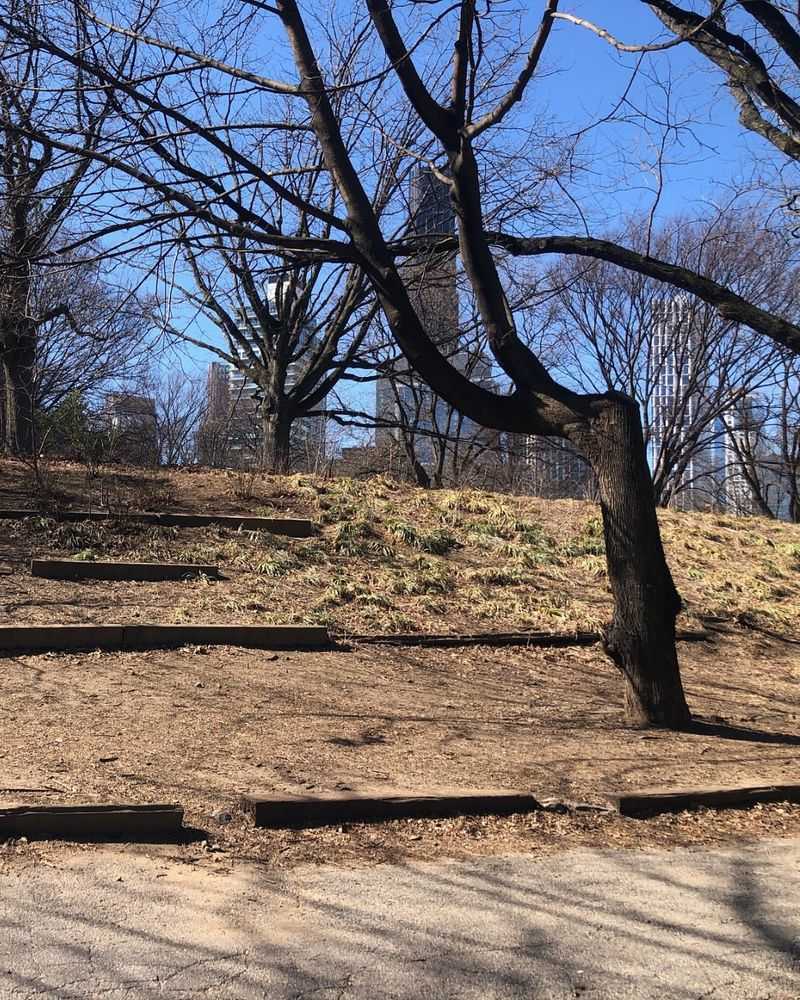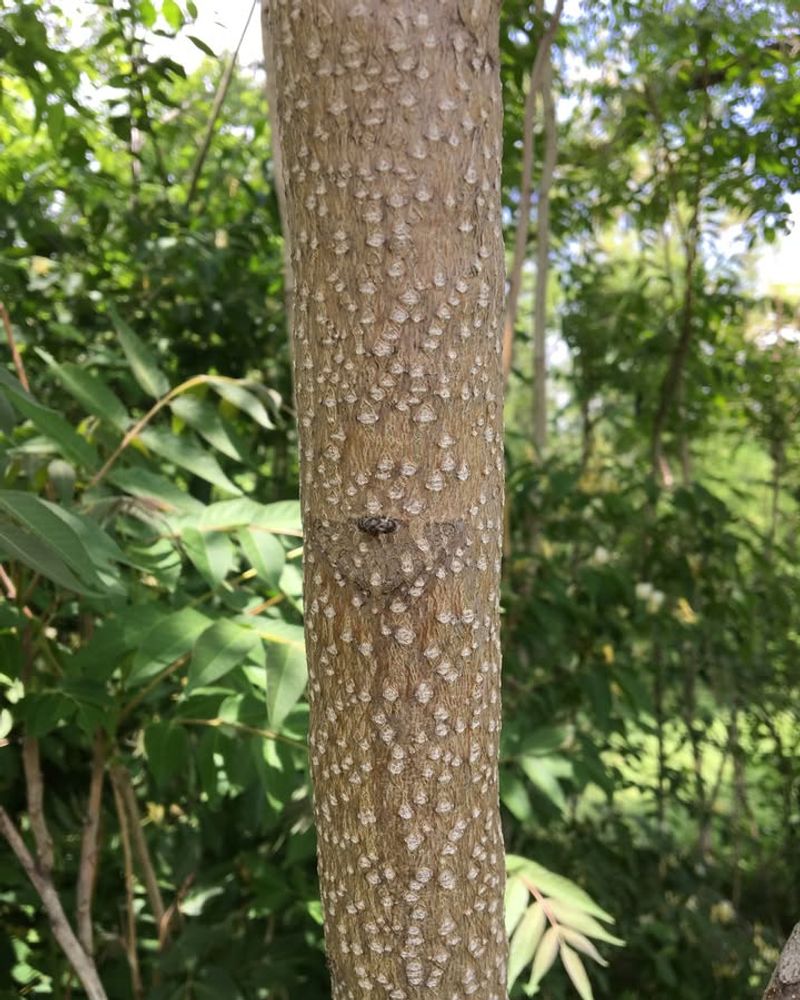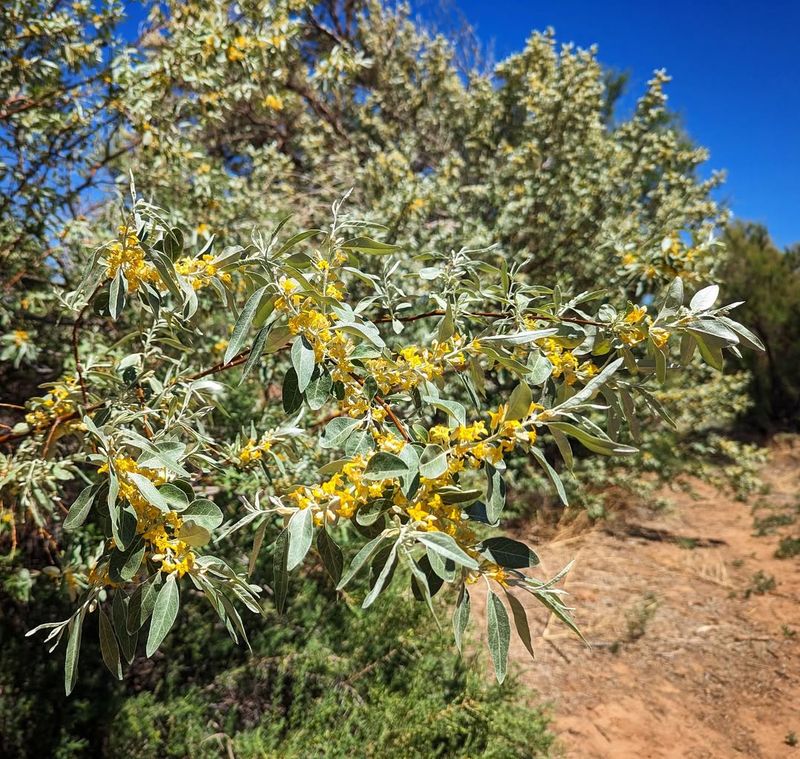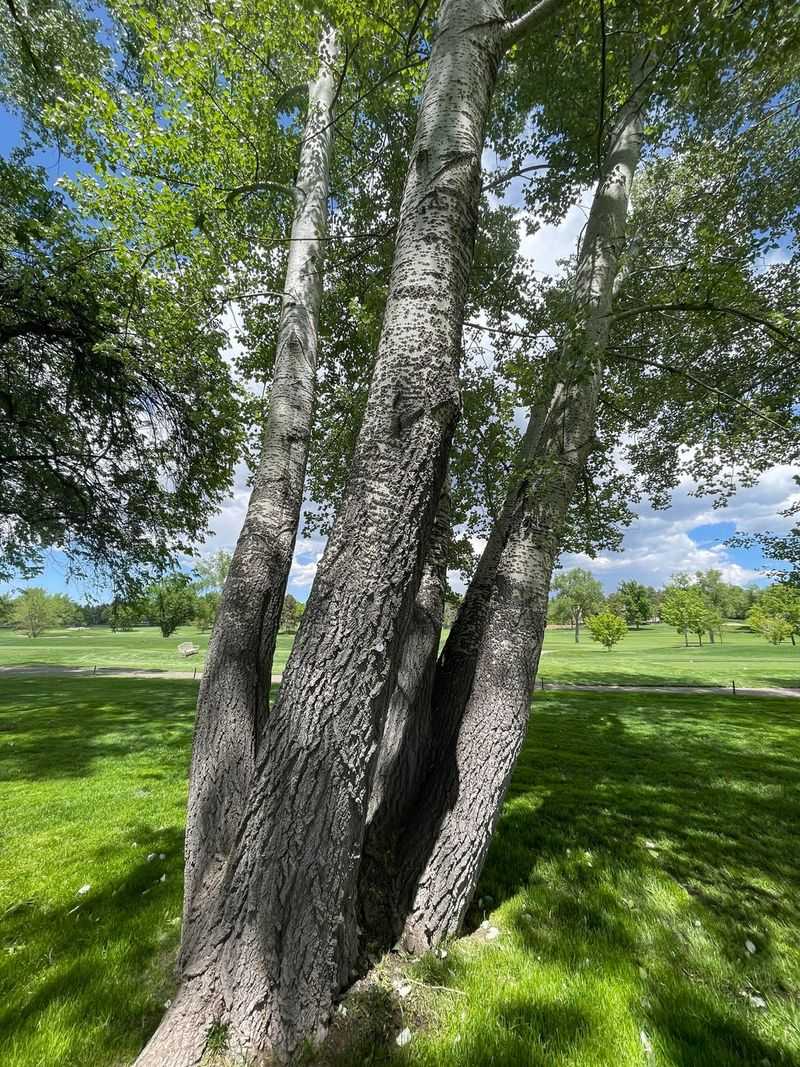Planting trees in your yard can add beauty and shade, but not every tree belongs in an Indiana landscape. Some species cause expensive damage to foundations, sidewalks, and sewer lines, while others drop messy fruit or attract harmful pests.
Knowing which trees to avoid will save you time, money, and frustration down the road.
1. Bradford Pear
Bradford Pears look stunning in spring with their clouds of white flowers, but beauty comes at a steep price. Their branches split easily during storms, creating dangerous hazards and costly cleanup bills.
The wood is incredibly weak and prone to breaking under snow, ice, or even strong winds. Indiana homeowners often face repeated damage to roofs, cars, and power lines when limbs come crashing down unexpectedly.
Beyond structural issues, the tree produces an unpleasant odor during blooming season that many find offensive and overpowering.
2. Silver Maple
Fast growth might sound appealing, but Silver Maples grow too quickly for their own good. Shallow, aggressive roots spread far and wide, buckling sidewalks, cracking foundations, and invading sewer lines with alarming frequency.
Repairs can cost thousands of dollars when roots infiltrate underground pipes or lift concrete surfaces throughout your Indiana property.
Branches break easily during storms, and the tree drops seeds, leaves, and twigs constantly. Maintenance becomes a never-ending chore that consumes weekends and drains your wallet over time.
3. Mulberry
Birds absolutely love mulberries, but Indiana homeowners quickly learn to regret planting them near houses or driveways. Ripe berries fall continuously throughout summer, creating purple stains on everything below.
Patios, cars, sidewalks, and outdoor furniture become covered in sticky, difficult-to-remove juice that attracts wasps and other insects.
Children and pets track the mess indoors, staining carpets and floors. The constant cleanup becomes exhausting, and the stains prove nearly impossible to remove completely from porous surfaces like concrete.
4. Black Walnut
Black Walnuts produce a chemical called juglone that poisons many common plants, flowers, and vegetables growing nearby. Tomatoes, azaleas, lilacs, and dozens of other species wilt and die within the tree’s root zone.
Gardening becomes nearly impossible anywhere near these trees, limiting your landscaping options dramatically.
The large nuts create additional problems, denting cars, injuring people, and attracting squirrels that cause their own property damage. Staining from the nut husks ruins driveways and anything else they touch permanently.
5. Weeping Willow
Romantic and graceful in appearance, Weeping Willows hide a destructive secret beneath the soil. Their roots aggressively seek water sources, infiltrating septic systems, sewer lines, and drainage pipes with devastating efficiency.
Plumbers often discover thick root masses completely blocking underground pipes, requiring expensive excavation and replacement work.
Branches break frequently during storms, and the tree demands constant moisture to survive. During dry Indiana summers, keeping one healthy requires significant watering, driving up utility bills while roots continue damaging infrastructure.
6. Eastern Cottonwood
Each spring, Cottonwoods release massive clouds of fluffy white seeds that blanket everything in sight. Lawns, pools, air conditioner units, and gutters become clogged with the cotton-like material that resembles a snowstorm.
Allergies flare up as the seeds drift through the air for weeks, and outdoor activities become unpleasant during peak release periods.
The tree also drops branches regularly, grows enormous quickly, and has weak wood that fails during storms. Maintenance demands remain high throughout the tree’s lifespan, making it unsuitable for Indiana residential properties.
7. Norway Maple
Dense shade from Norway Maples prevents grass and most other plants from growing beneath their canopy, leaving bare dirt throughout your Indiana yard. The shallow root system competes aggressively with nearby vegetation for water and nutrients.
Classified as invasive in many areas, these trees spread rapidly into natural woodlands, crowding out native species that wildlife depends upon for food and shelter.
Removing them becomes difficult once established, as they produce numerous seedlings and sprout vigorously from stumps. Property values can actually decrease when these problematic trees dominate the landscape.
8. Tree of Heaven
Despite its heavenly name, this tree creates pure hell for homeowners trying to control its spread. Roots send up countless suckers throughout your yard, creating dense thickets that choke out desirable plants.
Cutting it down only makes the problem worse, as each root fragment can sprout multiple new trees that grow incredibly fast.
The foliage and flowers emit a foul odor that smells like rotting peanuts or cat urine. It also serves as the preferred host for spotted lanternflies, an invasive pest causing agricultural damage throughout Indiana.
9. Russian Olive
Sharp thorns covering Russian Olive branches make pruning and maintenance genuinely dangerous work. The tree spreads aggressively through root suckers and seeds, quickly overtaking Indiana yards and natural areas alike.
Birds distribute seeds widely after eating the small fruits, causing new trees to pop up throughout your property and neighboring lands.
Classified as invasive in many regions, it outcompetes native plants that provide better habitat for local wildlife. Removal requires persistent effort over multiple years, as roots continue sending up new shoots long after cutting the main trunk.
10. White Poplar
White Poplars spread through underground roots that send up shoots dozens of feet from the parent tree. Your Indiana lawn becomes filled with unwanted saplings that require constant mowing and removal efforts.
Neighbors often complain when suckers invade their yards, creating tension and potential disputes over property boundaries and maintenance responsibilities.
The trees also break easily during storms, and the constant suckering makes complete removal nearly impossible. Even after cutting down the main tree, new shoots continue appearing for years, creating ongoing frustration and maintenance headaches.

